All about painting ceilings
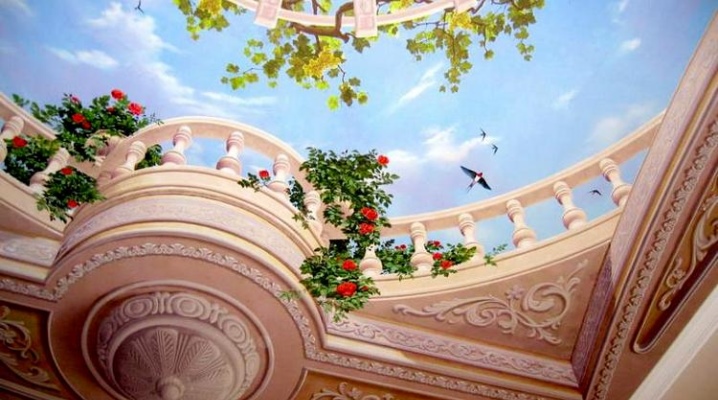
Modern design welcomes both laconic design and decor, and fanciful sophisticated solutions. Painting on ceilings is an effective way to decorate an interior, add expressiveness to a composition, volume and height to ceilings. The main thing is to choose the right decor - then you can not only bring originality to the ensemble, but also correct the problematic parameters of the room.
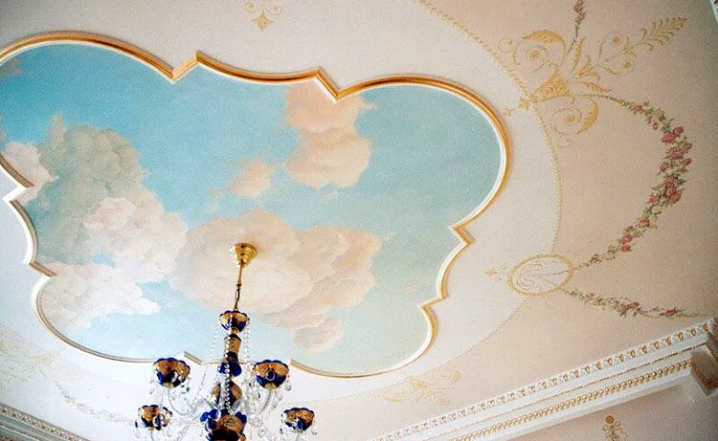
Peculiarities
A painted ceiling is not a very common design solution, since this process is very time consuming, especially when doing artistic painting in an apartment with your own hands. If you turn to specialists, then the pleasure will be quite expensive. It is very important to choose a plot based on the general style; the option can be selected for almost any design.
It should be noted that the painting is not suitable for minimalist compositions and rooms decorated in country style.
Pay attention to the following nuances:
- a small room requires a special attitude to the choice of motives, otherwise you can make the space even smaller, for example, sea motives expand visually;
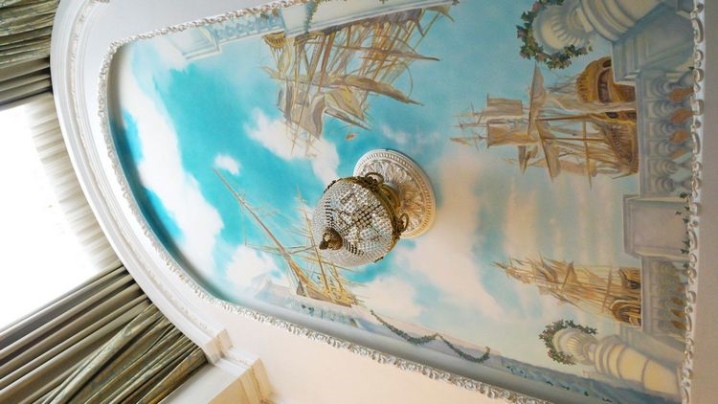
- the color scheme is very important, it should overlap with the general color scheme;
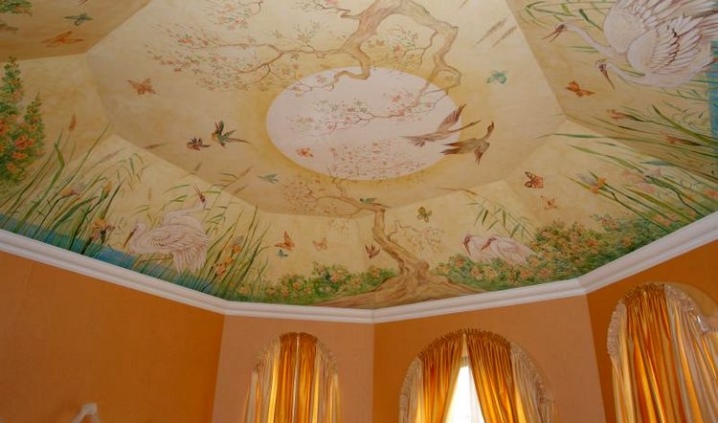
- in the bedroom, predominantly use pastel, muted shades;
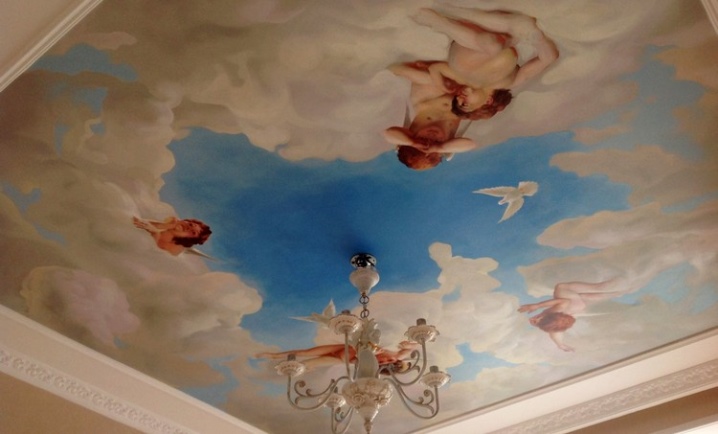
- in the nursery, plots in delicate colors will be appropriate, but a small amount of bright details is permissible, fabulous and cartoon motives are relevant;
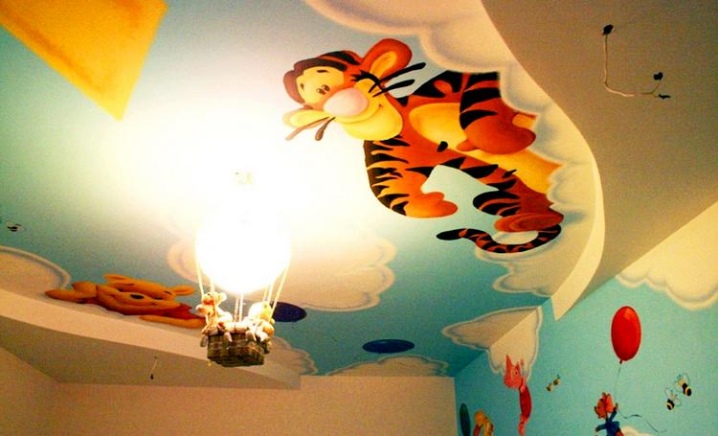
- a narrow hallway will be decorated with ensembles with small elements;
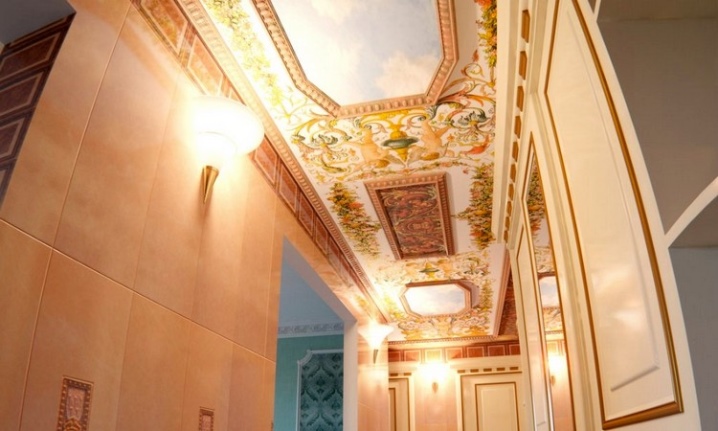
- for the hall, painting in blue or green shades is most suitable;
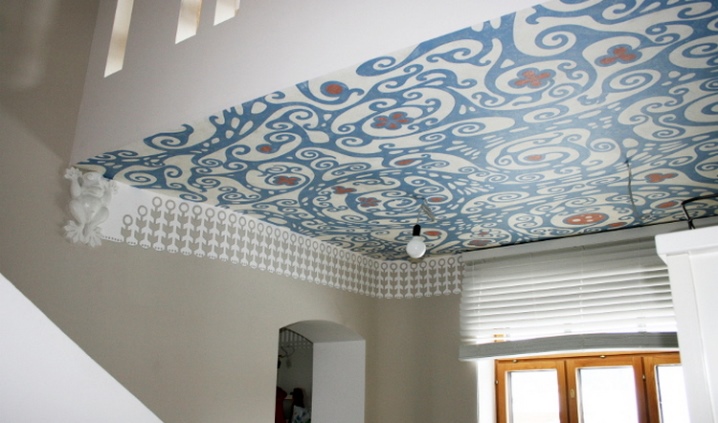
- the living room is characterized by more magnificent and solemn plots;
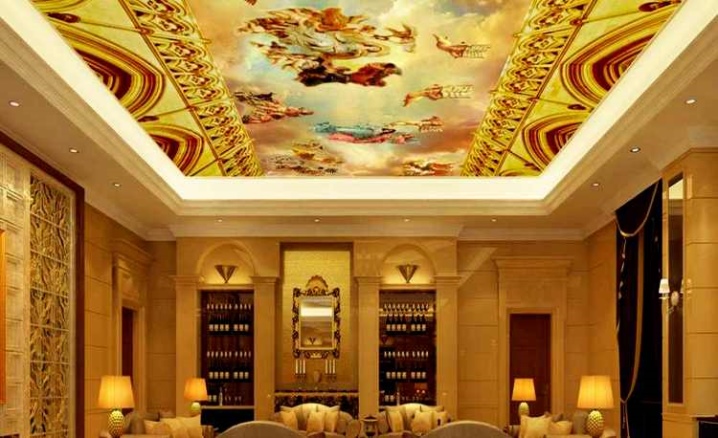
- still lifes, products, abstractions are appropriate in the kitchen.
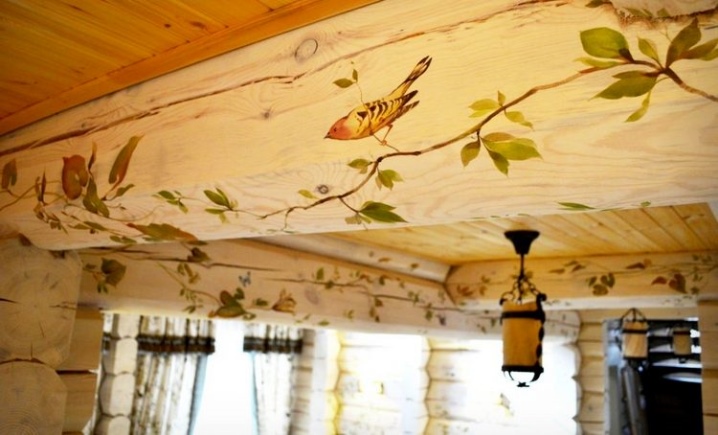
The most common subjects for the image are the sky with stars, clouds, birds.
Another interesting technique is the repetition of the details of the pattern of furniture or textiles. The image must exactly match the design solution, regardless of the functional purpose of the room.
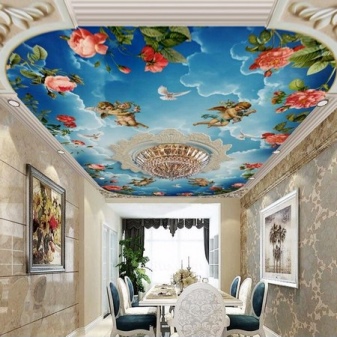

The painting is suitable for both wooden and suspended ceilings. It is called artistic because this process is entirely creative, requiring certain skills, creativity and imagination.
Tools and materials
In addition to the creative component, it is necessary to think over the physical implementation of the process.
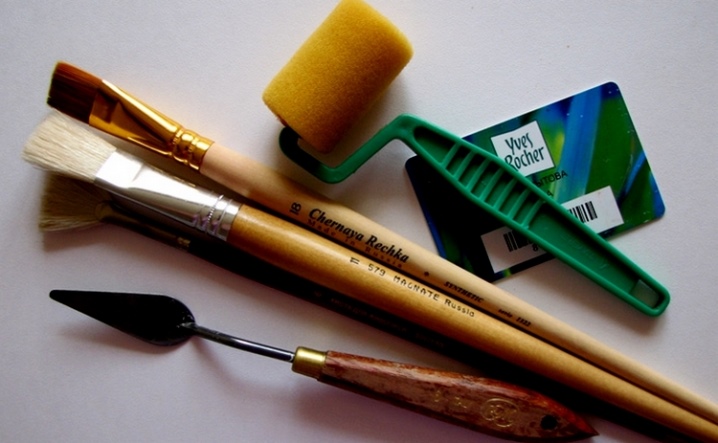
For this, the following materials and tools should be prepared:
brush equipped with a long handle;
sandpaper with a fine-grained surface;
bucket;
spatulas of various types;
different-sized brushes and rollers;
level, tape measure;
acrylic-type primer that penetrates deep into the background surface;
starting putty;
finish putty.
In addition, it is possible to use:
spray gun - a powerful and dimensional tool for the embodiment of corpulent details, background coloring;

- airbrushes - work like a pigment spray;

- stencils, roller of fur type.

Brushes are needed to draw finer details. Do not forget that before starting work, all objects in the room must be covered with polyethylene to protect them from paint.
Application technique
You can paint the ceiling yourself, subject to a set of creative and artistic skills. In the absence of these, you can use the technique of using stencils. To begin with, a plot motive, style, color palette is selected. After that, you can proceed to the preparatory process, but first the application technique is selected. Modern painting is carried out in the following ways.
Stencil. An excellent method for those who do not have drawing skills. Stencils are purchased in construction departments, where their range is quite wide. You can find a template on the Internet and create a stencil yourself. Stencil painting is carried out with a short-nap stencil brush or sponge. Correct application - from the middle to the edges.
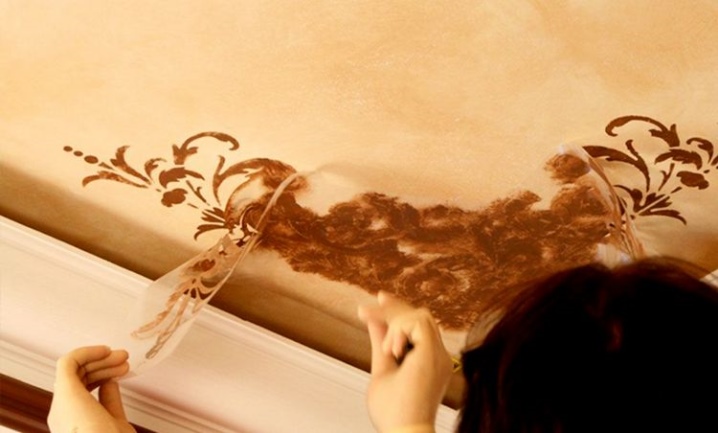
- Acrylic. A huge plus of such a material is the absence of odor, moisture resistance of the material, excellent adhesion to wood, plaster, glass, metal. A wide range of paints allows you to choose a shade to your liking.
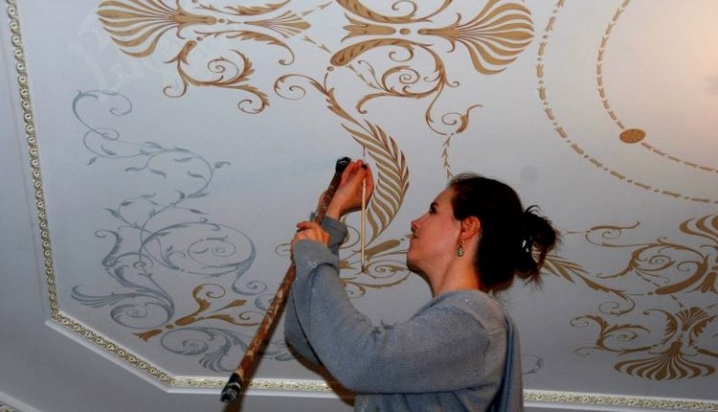
- Fresco. Here you need a special kind of powder, which is dissolved in a liquid, the composition is applied to the ceiling. Very good material, wear-resistant and durable.
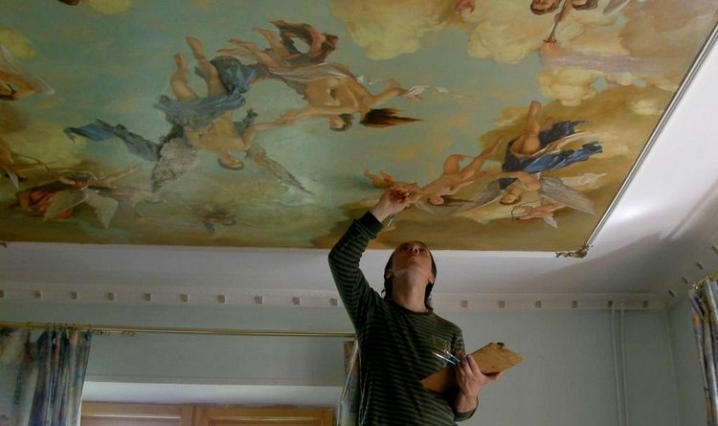
- Volume. It is used where, according to the idea, it is necessary to create a feeling of a different reality. Volumetric ceiling painting embodies a three-dimensional realistic image.

- Fluorescent. In residential buildings, this spectacular method is rarely used, since light falling on the pigment provokes its glow.
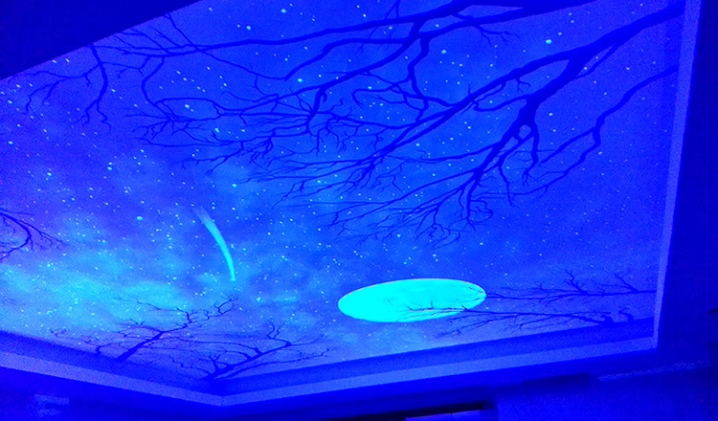
- Oil. Dyes of this type allow you to form plots as realistic and original as possible. This finish is durable, does not fade, but the pigment dries for a long time and smells very strong.

- Temper. The most durable design of all the existing ones, since the pigments contain glue. This paint has almost no smell, it dries relatively quickly.
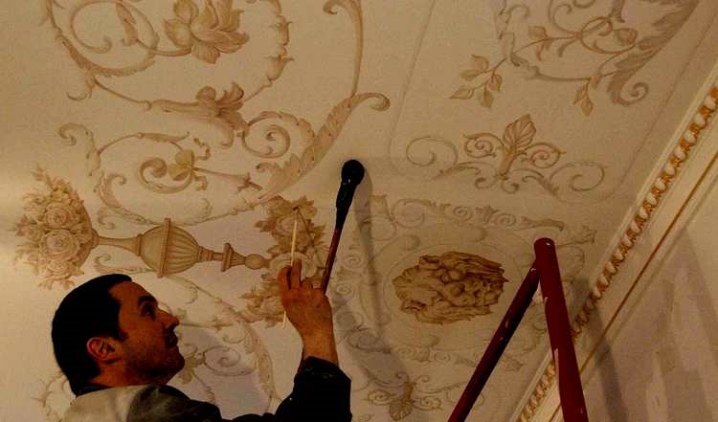
After choosing a technique, you can proceed to the preparation stage, which includes the following steps.
Cleaning. It is necessary to clean the previous finish: tiles, putty, plaster, whitewash, paint. First, thoroughly wet the ceiling, and when the material has softened, it can be easily removed with a scraper. If you are dealing with a suspended ceiling, it is dismantled so that no screws remain.
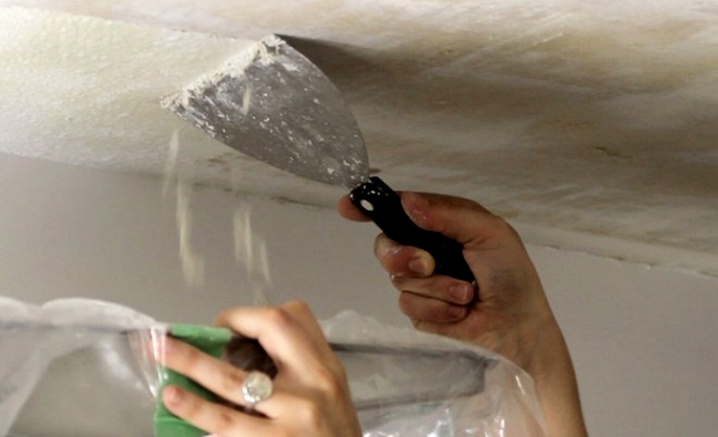
- Primer. The surface should be impregnated with an acrylic-type primer using a roller - this increases the adhesion between the base base and the decor.
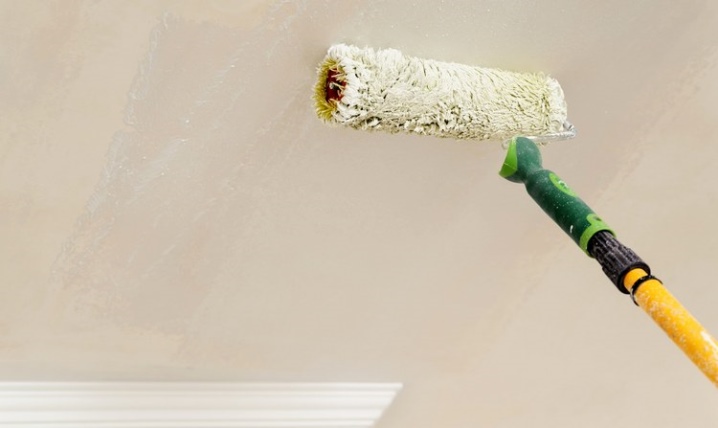
- Alignment. Evaluate the quality of the surface, its evenness, for this use the level of the building type. If cracks, grooves, bumps are found, they must be leveled with a start-putty. In the presence of serious level changes, a screed is carried out. When the leveling is completed, the surface is sandpaper.

- Putting. Smoothness is achieved with a plaster or acrylic type finish putty. The composition must dry completely before the next step.

- Toning. Sand the surface and tint it with a single shade. The most common pigments are muted, light, pastel. Material - oil or acrylic paint.
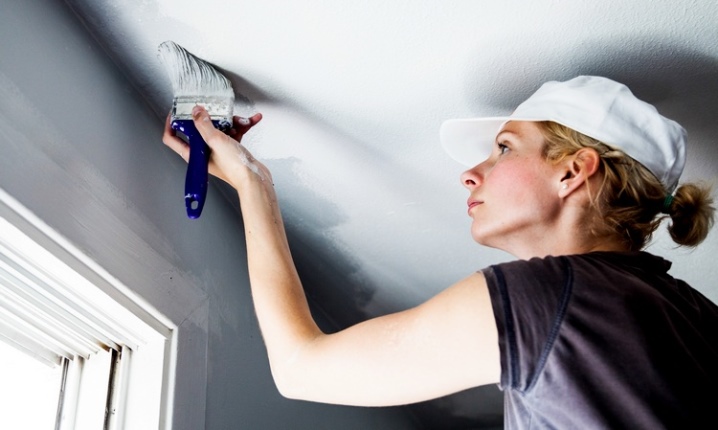
The surface is fully prepared, you can proceed to drawing images.

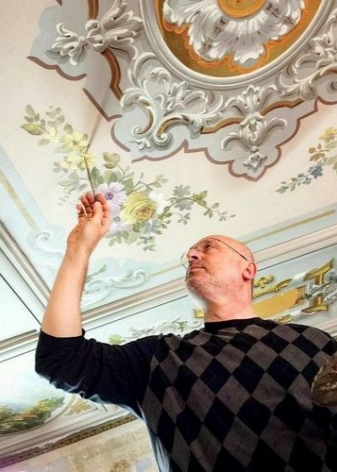
The algorithm of actions at this stage is as follows.
Sketch creation. It is made on paper, in full color, so that there are no problems with the selection of tones. Create a sketch for each part and number the templates.
Preparation of art materials. To transfer the sketch to the ceiling surface, prepare a palette, paints of a suitable type, pencil, brushes, sponges, a container of water. You will need a stepladder.
Set up the ladder so that it does not swing and stand as safe as possible, otherwise you will constantly lose concentration. Start painting from the area where the image ends.
Further, the image from the sketch is transferred to the ceiling, by means of a stencil or drawing. If the sketch is created in full size, on the back the drawing is hatched, applied to the surface and pressed through. The reduced sketch is transferred using the projector, into which the template is placed. The light is directed to the background and increased as needed.
First of all, the background and general large details are drawn and painted. To mix paints, use a palette, if the stroke is unsuccessful, wipe it off with a damp sponge as quickly as possible.After toning large details, small ones are drawn up.
When the drawing is ready, you need to give it time to dry completely. This period depends on the selected material, some paints dry in 2 hours, some in a week.
It is very important not to let the fresh drawing fade, crack, and get dirty. Therefore, it is optimal to cover the image with acrylic-type varnish, which is sprayed on the ceiling. When the varnish is dry, the surface should be polished with a dry brush.
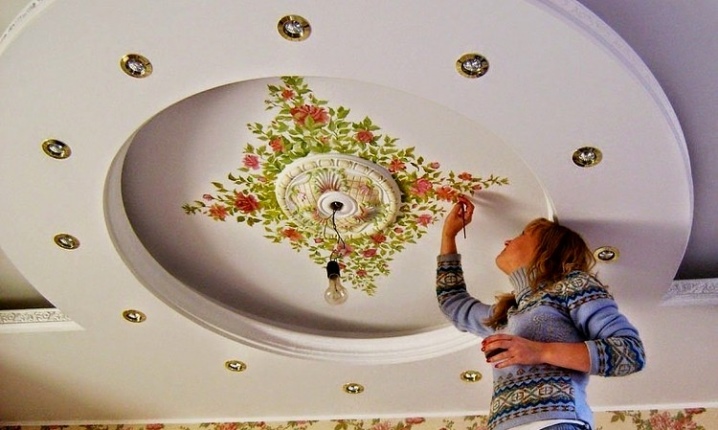
Examples in the interior
The photo selection will clearly illustrate how beautiful the painted ceiling looks:
- sky, clouds and birds - one of the most common subjects for painted ceilings;
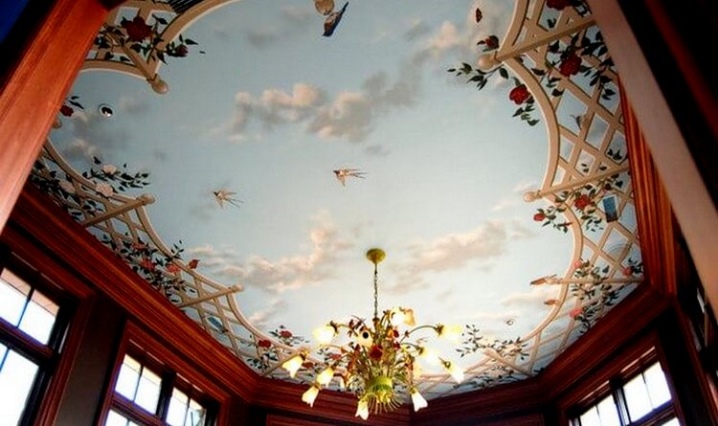
- painting is a luxurious way to transform an interior, add splendor, status, wealth to it;

- the image does not have to be subject - ornaments that resonate with the general design are very relevant;
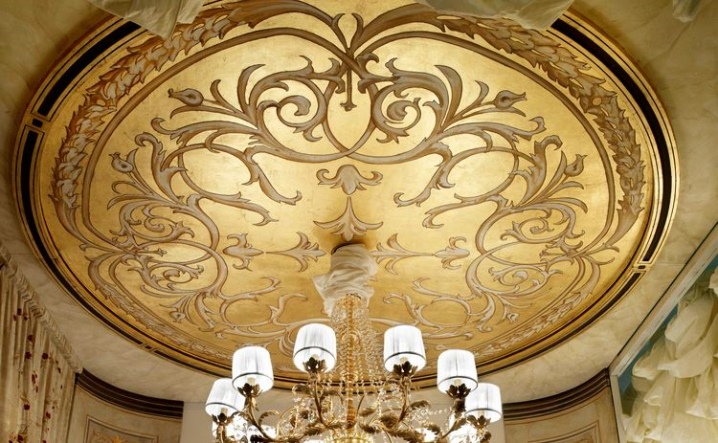
- painted ceilings are appropriate not only in pretentious styles;

- an excellent background for painting is the attic ceiling;
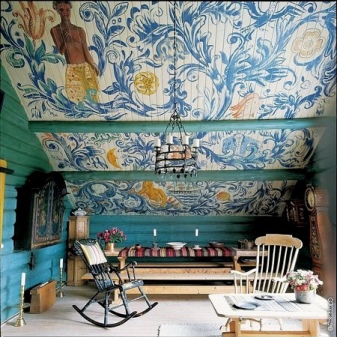

- laconic design compositions literally come to life with the help of painted details.
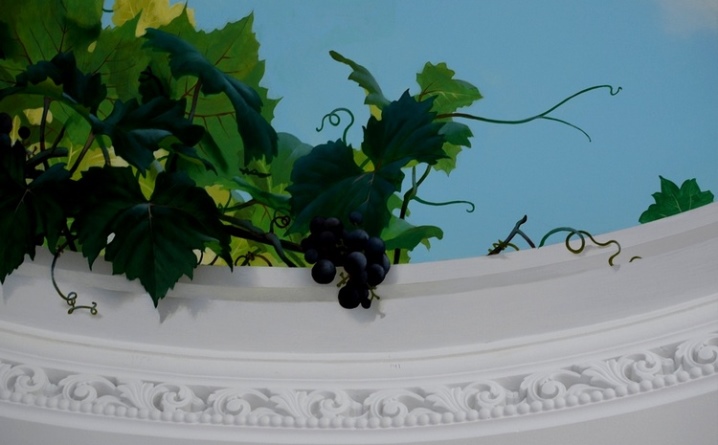
For more information about painting ceilings, see the video below.













The comment was sent successfully.